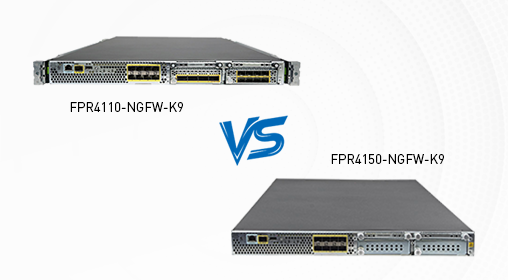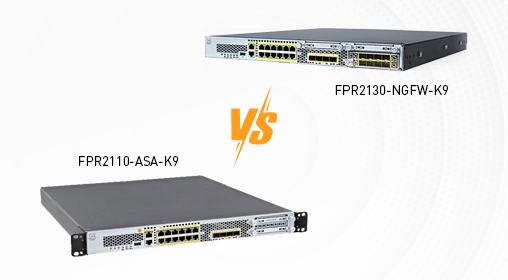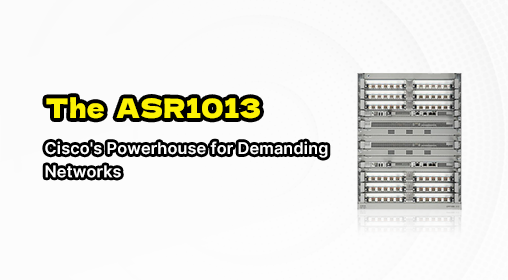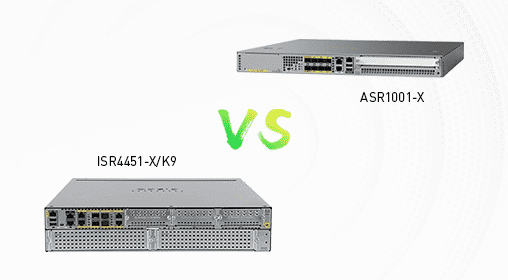














Cisco Firepower Face-Off: Unpacking the Real Differences Between FPR4110-NGFW-K9 and FPR4150-NGFW-K9
Choosing between the FPR4110-NGFW-K9 and the FPR4150-NGFW-K9 is like picking the right engine for a vehicle; both are built for security highways, but one is designed for heavier loads and steeper climbs. The 4110 serves as a robust entry-point into Cisco's next-generation firewall lineup, perfectly capable for mid-sized organizations or branch offices. In contrast, the 4150 clearly positions itself as the performance-oriented big sibling, engineered to handle the intense data traffic and sophisticated threat prevention demands of large enterprise cores or data centers without breaking a sweat. This isn't just a minor spec bump—it's a fundamental step up in processing muscle designed for environments where every microsecond of latency counts.
Diving into the hardware architecture reveals the core of their divergence. Both appliances are part of the Firepower 4100 series, which operates on a distinct physical architecture separating the underlying FXOS system from the managed security application (like FTD or ASA), a design that allows for more flexible upgrades and resource management. Think of FXOS as the foundation and the security software as the operational unit living on top of it. The key differentiator lies in the raw power Cisco has built into each chassis to sustain performance when all the advanced security features are switched on. The FPR4150 packs a significantly more powerful processing punch, which directly translates to higher thresholds for threat inspection throughput, VPN connections, and overall network capacity. It's the hardware muscle that ensures deep packet inspection, intrusion prevention (IPS), and advanced malware analysis don't introduce a bottleneck when the network is under heavy load.
|
Feature |
FPR4110-NGFW-K9 |
FPR4150-NGFW-K9 |
|---|---|---|
|
Product Series |
Firepower 4100 Series |
Firepower 4100 Series |
|
Form Factor |
1U Rack-mountable |
1U Rack-mountable |
|
Core Architecture |
FXOS base with managed security application (e.g., FTD) |
FXOS base with managed security application (e.g., FTD) |
|
Key Differentiator |
Solid base performance for mid-range needs |
Significantly higher performance tier for demanding environments |
When it comes to the features you can actually enable, both platforms run the same Cisco Firepower Threat Defense (FTD) software, sharing access to the entire ecosystem of next-generation firewall capabilities. This includes everything from application visibility and control (AVC) and advanced malware protection (AMP) to sophisticated intrusion prevention systems (IPS) and site-to-site VPNs. The functional experience within the Firepower Management Center (FMC) will be consistent. However, the experiential difference becomes starkly apparent under pressure. The FPR4110 might start to show performance constraints when you max out its capacity with complex inspection rules and a high volume of encrypted traffic. The FPR4150, with its superior hardware, is built to maintain line-rate inspection and low latency even with every single security feature turned on to its maximum setting. For the network administrator, this means the 4150 is far less likely to require tactical performance tuning or cause anxiety during peak usage or security incidents.
From a total cost of ownership and stability perspective, the FPR4110 presents a compelling case for organizations with well-defined and stable requirements that fit comfortably within its performance envelope. Its primary advantage is a lower initial investment for a genuinely capable NGFW platform. The trade-off is its lower performance ceiling, which could necessitate a premature hardware upgrade if the network grows or threat landscapes evolve unexpectedly. The FPR4150, while commanding a higher price upfront, is an investment in headroom and operational stability. Its robust design ensures consistent performance under heavy and fluctuating loads, which translates to greater operational reliability. This scalability often provides a better long-term value, preventing a costly and disruptive hardware refresh down the line. It's the more stable platform for environments where unpredictable traffic spikes are the norm.
So, the bottom line? The FPR4110-NGFW-K9 is a formidable and smart choice for environments where demands are predictable and align with its specifications. It delivers the full Cisco security stack without overkill. The FPR4150-NGFW-K9, however, is the unambiguous candidate for demanding, high-traffic environments where ensuring consistent performance, future-proofing, and maintaining sub-second latency with comprehensive threat inspection are non-negotiable business requirements. Your choice ultimately hinges on a realistic, forward-looking assessment of your network's traffic volume and security complexity.




